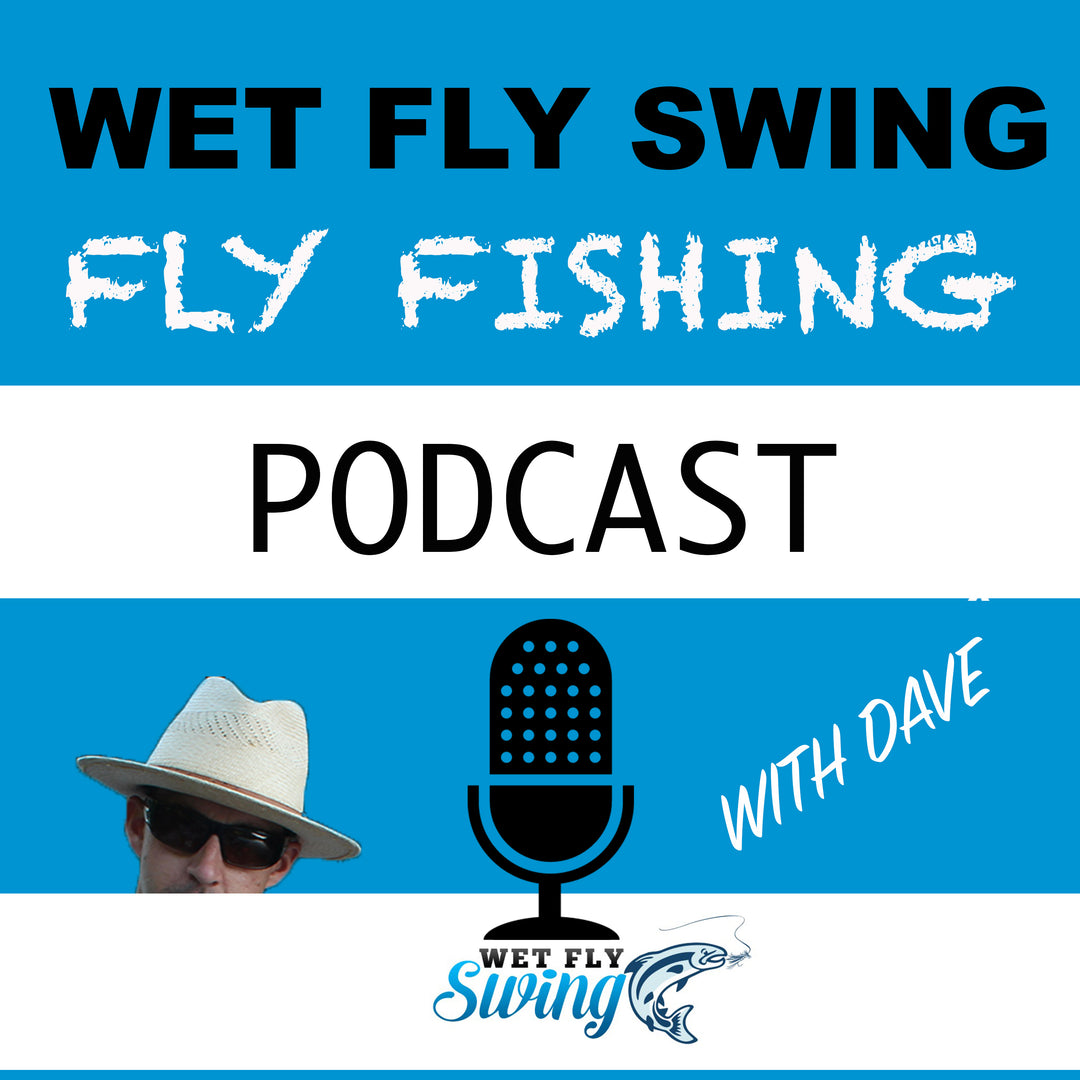Fall Streamer Techniques

Hi everyone, I’m Joel Doub, one of the owners of TMR and a self-admitted streamer junkie. I fish them all year, in the spring the bite can be great, at certain times in the summer all big fish will eat and the fall is notorious for large brown trout, inaccessible most of the year, losing their minds and aggressively chasing big streamers as they prepare to spawn. A quick note about spawning; if you see a big trout holding on a clear pea gravel light-colored bottom, admire the view and move on, they are on a redd! Anyway, it’s a great time of year and a narrow window sometimes when you can expect to see big fish eating streamers. I’ve gathered some of my favorite flies, techniques, and words of hard-won wisdom below. This is my take on the subject, I still have much to learn, but luckily Montana is full of fishy people.
So why is the fall such a good time to fish streamers? For one thing, fishing pressure is reduced - tourists are retreating home, water temps are dropping, and most of the locals are elk hunting. With winter looming on the horizon, fish are on the feed looking to pack on every ounce of weight they can before rivers freeze over. And lastly, the hormones of spawning make the brown trout aggressive and a bit reckless. Presenting the astute angler with a chance to target large fish, the type that usually only come out at night the rest of the year. The type of fish you see caught on mice by the light of the full moon, but that’ a topic for another time...The age-old saying of “large flies, catch large fish” rings true when you’re streamer fishing. There are a bunch of techniques for targeting these fish, and I’ll get into some of those details below.
When I think of TMR rods we think of gentle dry fly presentation to rising fish. As hoppers slow down and prolific hatches diminish we turn our attention to heavier rods in the fall. Our 7-weight rod is designed to be a streamer trout rod. Streamer fishing demands a soft tip from your rod, as it is important to impart action and “swim” the fly. We have designed this rod to incorporate the traditional progressive action that is found on all TMR rods with a soft tip and power through the butt. A feat that isn’t common in today’s fly rod market.

Ok, so let's cut to the chase, first I’ll talk about my preferred setup and the differences between different line choices:
- Floating Lines - a common technique, I use them a fair amount earlier in the year with 7-9’ leaders. This tends to be a better line choice when fishing smaller baitfish imitations intended to imitate juvenile trout and whitefish. It’s also a great choice when fishing sculpin-type flies when retrieving them downstream along the bank.
- Sink Tip Lines - the most versatile and my preferred line for streamer fishing. These are available in everything from slow intermediate sinks to heavy full sink tips. The type of sink tip you choose and its sink rate will correspond to the type of fly being used, the weather type, water temp, and time of year. Lots of variables I know, but here are some good things to consider: Is this a fly I want stuck on the bottom? Are fish aggressively chasing at warmer temps or are they locked up on the bottom? Am I fishing fast, heavy water, or slower meandering pools? I use short stout leaders with sink tip lines, think 5 feet total length, have 20lb maxima, half 10lb maxima. If I hook a big fish I don't want to lose it, this heavy leader also helps you save your expensive streamers from snags and trees!
- Full Sink Lines - I have limited experience using these. For all but the deepest waters, I have not found many benefits. That being said, full sink lines may be the best strategy for targeting trout in deep fast water. If your local fishing hole fits the bill, they are definitely worth considering. Use short heavy leaders here, the same set-up as the sink tip leader referenced above.

Streamer Fly Selection
When it comes to fly selection I like to have a variety of flies in my meat locker. The key differences are color, shape/bulk, weight, and what they are intended to imitate. Generally, there are three types of streamers that imitate small fish, sculpin, and attractor-type flies. It's important to remember to change flies often if you aren't catching fish. You may have to work a bit to find the correct combination of color/shape/weight the trout are keying on. There is a type of match the hatch methodology to effectively fishing streamers. Here are some ideas when it comes to picking a streamer to fish:
Color - There is something to be said for the adage, bright days and/or clear water equals bright colored flies, dark days and/or cloudy water use dark colors. Keep in mind fish often view flies from below, dark flies will actually provide a stronger profile when viewed this way, thus being more visible in low light conditions. I usually start with a black streamer, as one of our guide friends is fond of saying: “if black doesn’t work, try black.” Unfortunately, it’s not quite that simple. I’ll use local knowledge of the water to select my initial color and profile/bulk/weight of the fly. For example, I know from experience that heavy bulky flies that incorporate the coloring of juvenile whitefish (grey, tan, white) are very effective on the Yellowstone River. This local knowledge of the river you are fishing is helpful to determine a starting point, usually, you can find out at a local fly shop or watering hole. As I mentioned above I usually start with black and then I'll change colors every 15-20 minutes until I start seeing fish chase the fly and/or eat it. Here is a normal progression: Black, black & olive, olive, yellow, grey, white. All of these colors will possess a similar profile, for example, sculpin, baitfish, leech, etc. If changing colors isn't successful then I will begin to change weight and profile. It’s a process, and sometimes it works right away, more often it takes a little experimenting to get it right. One of the benefits is you will become very proficient at tying loop knots. Oops, I forgot to mention that, here's a link to my favorite knot for attaching streamers.

Fishing Streamers - Once your 7-weight is rigged with an appropriate line, your flies have been purchased (or tied) it’s time to start your hunt for large, predatory fish. Streamers are tied in 3 general patterns which all require a different presentation for the best success.
- Sculpin or wounded baitfish patterns require long upstream casts to allow your fly to “swim” downstream, bouncing along the bottom. This presentation imitates a wounded or swimming baitfish and creates an easy meal for hungry trout in the tail out of the riffle. Pattern's like the McCune Sculpin fit this bill perfectly.
- Attractor-type streamers (ones in wild colors, lots of flash, etc) are best fished tight to undercut banks. Immediately when your fly hits the water you begin the stripping action to retrieve the fly in an erratic manner. Rod twitches, line strips, pauses, and more are all actions used to put movement into the fly and to cause that predatory switch to get flipped. The eats on these types of flies are aggressive and tend to be the angler’s favorite type of streamer fishing. Patterns like the Home Invader are an attractor-type.
- Swing type streamers are meant to be swung across the water column putting the fly right in front of a fish’s nose. Typically fished on two-handed light line spey rods, you’re able to cover water very quickly and methodically with a sinking line. This technique tends to be preferred while wet wading large freestone and tailwater rivers like the Yellowstone or Missouri. Swing style streamers often resemble steelhead flies, with stinger hooks and bodies tied on a separate shank, they tend to be a bit more sparse and sink more effectively. A Kreelex is a good example of this type of fly.
Fall may be a fleeting few weeks and the anglers looking to brave the weather are often rewarded with the largest trout of the season. Most likely it’s a golden-colored, kype-jawed brown trout that was lying in wait and fell victim to a well-placed streamer. Questions on our 7-weight or any rod that we make? We’re here to help and would be happy to talk through rod design, our philosophy, and which rod will best suit your specific needs.




